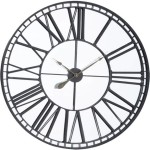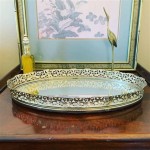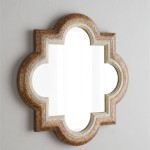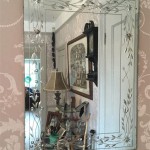Bathroom Mirror Hanger Hardware: A Guide to Hanging Your Mirror Securely and Stylishly
Bathroom mirrors are essential fixtures that enhance both functionality and aesthetics. Hanging a mirror in this high-moisture environment presents unique challenges, requiring specialized hardware designed for durability and stability. Bathroom mirror hanger hardware, a crucial component of this process, ensures that your mirror remains securely in place while also seamlessly blending into the bathroom's design.
This article will delve into the various types of bathroom mirror hanger hardware available, outlining their advantages and considerations. We will explore the essential factors to consider when selecting the appropriate hardware, emphasizing the importance of safety and sturdiness. Additionally, we will discuss installation tips and techniques that guarantee a secure and aesthetically pleasing installation.
Types of Bathroom Mirror Hanger Hardware
Bathroom mirror hanger hardware comprises a diverse range of options to accommodate different mirror sizes, weights, and installation preferences. Understanding the different types available empowers you to choose the most suitable solution for your specific needs.
1. Adhesive Hooks and Strips
Adhesive hooks and strips offer a convenient, drill-free solution for lighter mirrors. These are particularly useful for renters or those who prefer a non-permanent installation. However, their load-bearing capacity is limited, making them unsuitable for larger or heavier mirrors. While they might suffice for small decorative mirrors, they are not recommended for mirrors that require a high level of security.
2. D-Ring Hooks
D-ring hooks are versatile and widely used for mirror hanging. Typically constructed from metal, these hooks feature a circular loop or "D-ring" that allows for hanging the mirror securely with wire or a chain. D-rings are available in various sizes and finishes, enabling them to complement different mirror and bathroom styles.
D-ring hooks are typically used in conjunction with a mounting plate attached to the wall. The plate provides a robust base that distributes the weight of the mirror across a larger surface area. Choosing a D-ring hook with a suitable weight rating and matching it to a sturdy mounting plate is crucial for ensuring the mirror's stability.
3. Z-Clips
Z-clips are a specialized type of hardware designed for mounting mirrors directly against the wall. These clips are typically made from metal and feature a unique "Z" shape. The bottom of the Z-clip secures to the wall using screws, while the top part engages with a groove or hole on the back of the mirror.
Z-clips offer a discreet and secure installation method for mirrors with built-in grooves or corresponding holes. They are particularly suitable for large, heavy mirrors that require robust support. The discreet nature of Z-clips makes them aesthetically appealing, minimizing the visibility of hardware.
4. Wall-Mounted Brackets
Wall-mounted brackets provide a robust and secure option for heavy mirrors. These brackets are usually made from metal and feature a horizontal arm that extends from the wall, supporting the mirror at a chosen angle. The bracket's design offers a stable and adjustable point of contact for larger and heavier mirrors.
Wall-mounted brackets are ideal for large mirrors and can be customized to accommodate different angles and positions. They provide exceptional weight support and offer greater flexibility in terms of mirror placement. However, their installation typically requires drilling holes in the wall, which may not be suitable for all situations.
Factors to Consider When Choosing Bathroom Mirror Hanger Hardware
Selecting the right mirror hanger hardware is paramount for achieving a secure, stable, and aesthetically pleasing installation. Several factors need careful consideration to make an informed decision.
1. Mirror Size and Weight
The size and weight of your mirror are primary considerations. Smaller, lightweight mirrors can be supported using adhesive hooks or D-ring hooks with a lighter weight rating. Heavier mirrors necessitate sturdier options like Z-clips or wall-mounted brackets designed to withstand the extra weight.
2. Wall Material
The material of your bathroom wall is crucial. Drywall requires specialized anchors or fasteners that provide secure hold. Concrete walls, on the other hand, require different drilling techniques and fasteners. Understanding the material of your wall helps you choose the appropriate hardware and installation methods.
3. Bathroom Aesthetics
The aesthetic appeal of the hardware should complement your bathroom's overall design. Choose hardware finishes that blend seamlessly with your bathroom's fixtures, such as nickel, chrome, or brushed brass. Additionally, consider whether the hardware's visibility aligns with your preferred design aesthetic.
4. Installation Requirements
Consider your comfort level and the resources available for installation. Adhesive hooks and strips offer a drill-free option that simplifies the process. However, installing Z-clips or wall-mounted brackets requires drilling, which may necessitate additional tools and expertise.
Installation Tips and Techniques
Proper installation is crucial for ensuring the stability and longevity of your mirror. Adhering to these tips and techniques will minimize the risk of accidents and ensure a secure installation.
1. Measure and Mark
Before drilling or attaching hardware, accurately measure the mirror's dimensions and mark the wall where the hardware will be positioned. This ensures that the mirror hangs level and symmetrical.
2. Use Level
A level is essential for guaranteeing the mirror's straight and even placement. Utilize a level during the marking process to ensure the hardware is positioned horizontally and vertically. This prevents the mirror from tilting or appearing crooked.
3. Use Appropriate Fasteners
Employ appropriate fasteners for your wall material. For drywall, utilize anchors and screws specifically designed for drywall. Concrete walls require different drilling techniques and fasteners suitable for concrete. Incorrect fasteners can lead to instability and potential accidents.
4. Test Weight Limit
Before hanging your mirror, test the hardware's weight limit. Hang a weight approximately equal to the mirror's weight to ensure the hardware can bear the load. This precautionary step minimizes the risk of unexpected failure.

Glacier Bay Mirror Mounting Hanging Hardware Kit 805254 The Home Depot

How To Hang A Heavy Mirror Diy Family Handyman

Mirror Holder Clips Kit Clear Plastic Mounting Crystal Hanging Hardware Tools Frameless With S Temu

Tutorial How To Hang A Bathroom Mirror The Diy Playbook

How To Pick And Hang The Perfect Bathroom Mirror Roomhints

Round Hanging Wall Mirror Circle With Pu Leather Strap Silver And Frame Hardware Hanger Hook For Entryway China Bathroom Vanity Made In Com

Round Hanging Wall Mirror Circle With Pu Leather Strap Silver And Frame Hardware Hanger Hook For Entryway China Bathroom Vanity Made In Com

Ook 20 Lb 1 2 In Steel Mirror Support Hangers Pack 50233 The Home Depot

How To Hang A Hanging Mirror Without Accompanying Hardware

Invisible Mirror Clip Onward Hardware








